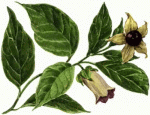Botany
|
1 may 2012 20:23:33 |
| De novo assembly of the carrot mitochondrial genome using next generation sequencing of whole genomic DNA provides first evidence of DNA transfer into an angiosperm plastid genome (BMC Plant Biology) |
|
Tweet Background:
Sequence analysis of organelle genomes has revealed important aspects of plant cell evolution. The scope of this study was to develop an approach for de novo assembly of the carrot mitochondrial genome using next generation sequence data from total genomic DNA.
Results:
Sequencing data from a carrot 454 whole genome library were used to develop a de novo assembly of the mitochondrial genome. Development of a new bioinformatic tool allowed visualizing contig connections and elucidation of the de novo assembly. Southern hybridization demonstrated recombination across two large repeats. Genome annotation allowed identification of 44 protein coding genes, three rRNA and 17 tRNA. Identification of the plastid genome sequence allowed organelle genome comparison. Mitochodndrial, iIntergenic sequence analysis allowed detection of a fragment of DNA specific to the carrot plastid genome. PCR amplification and sequence analysis across different Apiaceae species revealed consistent conservation of this fragment in the mitochondrial genomes and an insertion in Daucus plastid genomes, giving evidence of a mitochondrial to plastid transfer of DNA. Sequence similarity with a retrotransposon element suggests a possibility that a transposon-like event transferred this sequence into the plastid genome.
Conclusions:
This study confirmed that whole genome sequencing is a practical approach for de novo assembly of higher plant mitochondrial genomes. In addition, a new aspect of intercompartmental genome interaction was reported providing the first evidence for DNA transfer into an angiosperm plastid genome. The approach used here could be used more broadly to sequence and assemble mitochondrial genomes of diverse species. This information will allow us to better understand intercompartmental interactions and cell evolution. |
| 218 viewsCategory: Botany |
 Phylogeographic analysis reveals significant spatial genetic structure of Incarvillea sinensis as a product of mountain building (BMC Plant Biology) Phylogeographic analysis reveals significant spatial genetic structure of Incarvillea sinensis as a product of mountain building (BMC Plant Biology)A novel mesh processing based technique for 3D plant analysis (BMC Plant Biology) 
|
| blog comments powered by Disqus |
MyJournals.org
The latest issues of all your favorite science journals on one page
The latest issues of all your favorite science journals on one page



